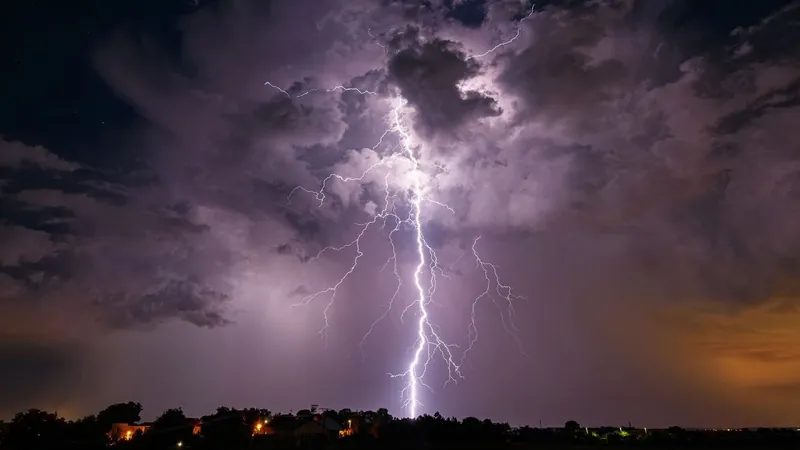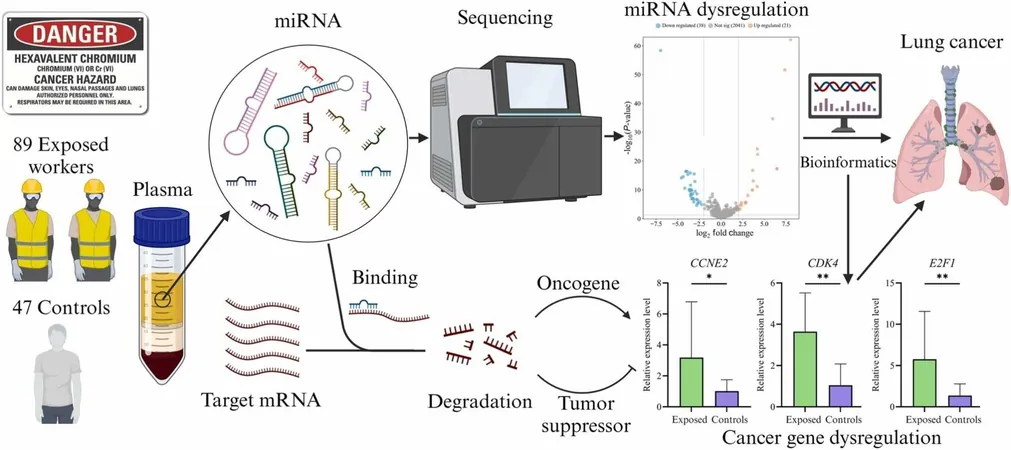
Cosmic Rays: The Mysterious Key to Understanding Lightning on Earth!
2025-03-31
Author: Sarah
Introduction
In a groundbreaking study published in *JGR Atmospheres* on March 3, researchers from Los Alamos National Laboratory have proposed that cosmic rays might hold the elusive answer to the mystery of how lightning is sparked on Earth. This discovery raises exciting possibilities about the interaction of cosmic phenomena and our planet's weather systems.
The Frequency of Lightning Strikes
Every day, Earth experiences a staggering 3 million lightning strikes. Despite this frequency, the precise triggers of lightning have remained largely elusive to scientists. Previous theories, mainly introduced in the 1960s and 70s, suggested that lightning begins with the thermal breakdown of air when it becomes sufficiently ionized, requiring an intense electric field within storm clouds.
However, researchers like Dr. Xuan-Min Shao pointed out that the electric fields measured in storm clouds are, in fact, ten times weaker than what was initially theorized necessary to initiate lightning.
The Research Methodology
To unravel this longstanding enigma, Dr. Shao and his team employed an advanced array of radio antennas strategically positioned 7 miles apart. This setup allowed them unprecedented visibility into the dynamics of lightning strikes.
Their investigation focused on a specific storm on July 30, 2022, which unleashed over 300 lightning flashes. By analyzing the trajectory of each bolt and the polarization of the electrical currents, the researchers found a crucial discrepancy: the direction of the lightning propagation did not match the expected polar positions of the electric fields in the clouds.
The Role of Cosmic Rays
This led them to conclude that the initial spark of lightning is not driven by traditional atmospheric electric fields but may instead be triggered by cosmic ray showers. Cosmic rays, high-energy particles that rush toward Earth at nearly the speed of light and originate from cosmic phenomena such as supernovae and black holes, could be responsible for creating conditions favorable to lightning.
Interestingly, cosmic ray showers produce exotic particles, including positrons, which are the antimatter counterparts of electrons. Dr. Shao suggests that these positrons might play a role in the observed behavior of lightning discharges, providing fresh insights into the interactions between cosmic phenomena and atmospheric processes.
Challenges and Future Research
While this study is not the first to explore the link between lightning and cosmic activity, it brings novel observations that fundamentally challenge previous theories. The implications of this research are tantalizing, yet Dr. Shao emphasizes that the journey does not stop here.
He and his colleagues face the challenge of capturing direct, simultaneous measurements of lightning and cosmic ray activity since current detection methods are limited.
Looking Ahead
Looking ahead, they aim to expand their research to study more thunderstorms while investigating potential correlations between lightning strikes and the solar cycle. Intriguingly, during solar maximum—a period of heightened solar activity—fewer cosmic rays are believed to reach Earth due to the sun's intensified magnetic field, which may influence lightning rates.
However, determining these relationships is complex, as numerous variables affect lightning occurrences. More extensive data collection and analysis will be necessary to clarify the impact of cosmic rays within the atmospheric dynamics.
Conclusion
As researchers delve deeper into the cosmos's influence on our planet's weather, one thing is clear: the confluence of cosmic rays and lightning may hold the key to understanding not only these awe-inspiring natural phenomena but also the interconnectedness of the universe and life on Earth. Stay tuned as this story unfolds!


 Brasil (PT)
Brasil (PT)
 Canada (EN)
Canada (EN)
 Chile (ES)
Chile (ES)
 Česko (CS)
Česko (CS)
 대한민국 (KO)
대한민국 (KO)
 España (ES)
España (ES)
 France (FR)
France (FR)
 Hong Kong (EN)
Hong Kong (EN)
 Italia (IT)
Italia (IT)
 日本 (JA)
日本 (JA)
 Magyarország (HU)
Magyarország (HU)
 Norge (NO)
Norge (NO)
 Polska (PL)
Polska (PL)
 Schweiz (DE)
Schweiz (DE)
 Singapore (EN)
Singapore (EN)
 Sverige (SV)
Sverige (SV)
 Suomi (FI)
Suomi (FI)
 Türkiye (TR)
Türkiye (TR)
 الإمارات العربية المتحدة (AR)
الإمارات العربية المتحدة (AR)